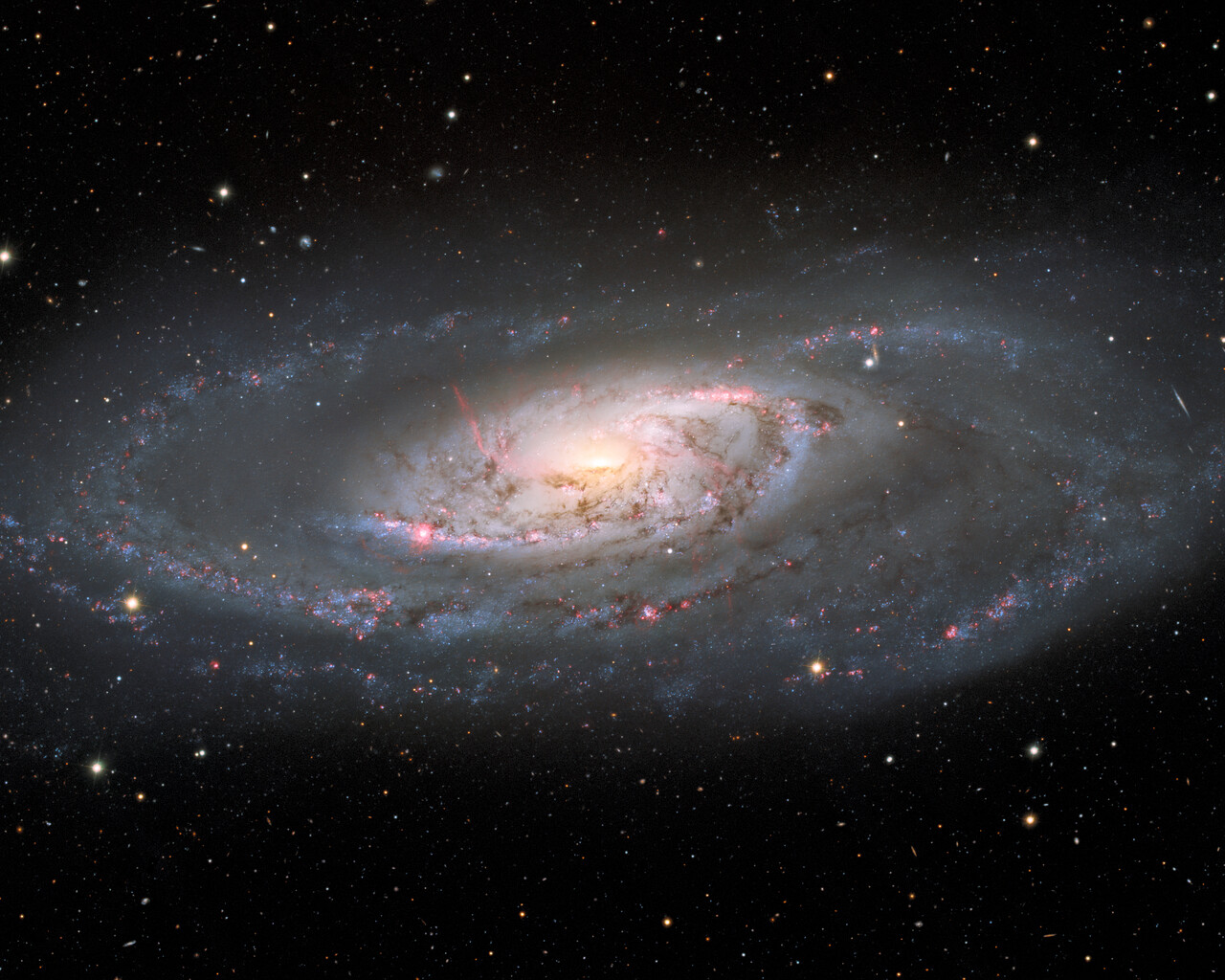Canes Venatici
Origin
A newer constellation invented in 1687 by Johannes Hevelius, Canes Venatici represents two dogs held on a leash by the figure represented in the nearby constellation Boötes. The brightest star is called “Cor Caroli”, Heart of Charles, in honor to British monarchy. It was named in the 1660s after a period of 11 years when Britain had no king.
Bright Stars
The brightest star is called “Cor Caroli”, Heart of Charles, in honor to British monarchy. It was named in the 1660s after a period of 11 years when Britain had no king.


 Photo of the constellation Canes Venatici produced by NOIRLab in collaboration with Eckhard Slawik, a German astrophotographer.
The annotations are from a standardized set of 88 western IAU constellations and stick figures from Sky & Telescope. Please find here a non-annotated version of the image.
Photo of the constellation Canes Venatici produced by NOIRLab in collaboration with Eckhard Slawik, a German astrophotographer.
The annotations are from a standardized set of 88 western IAU constellations and stick figures from Sky & Telescope. Please find here a non-annotated version of the image.
Credit: E. Slawik/NOIRLab/NSF/AURA/M. Zamani
Notable Objects
Canes Venatici has several notable Messier objects even though it is relatively small. Messier 51 is the famous Whirlpool Galaxy, a face-on spiral galaxy with a small companion, NGC 5195. It is a favorite target of amateur astronomers as it is one of the brighter galaxies in the night sky. Messier 3 is a magnitude-6.2 globular cluster that contains about 500,000 stars. M63 is a magnitude-9.3 spiral galaxy also known as the Sunflower Galaxy. Messier 94 is a magnitude-8.2 spiral galaxy. Messier 106 is a magnitude-8.4 spiral galaxy located about 24 million light-years from Earth. NGC 4631 is a magnitude-9.8 spiral galaxy also known as the Whale Galaxy.









































